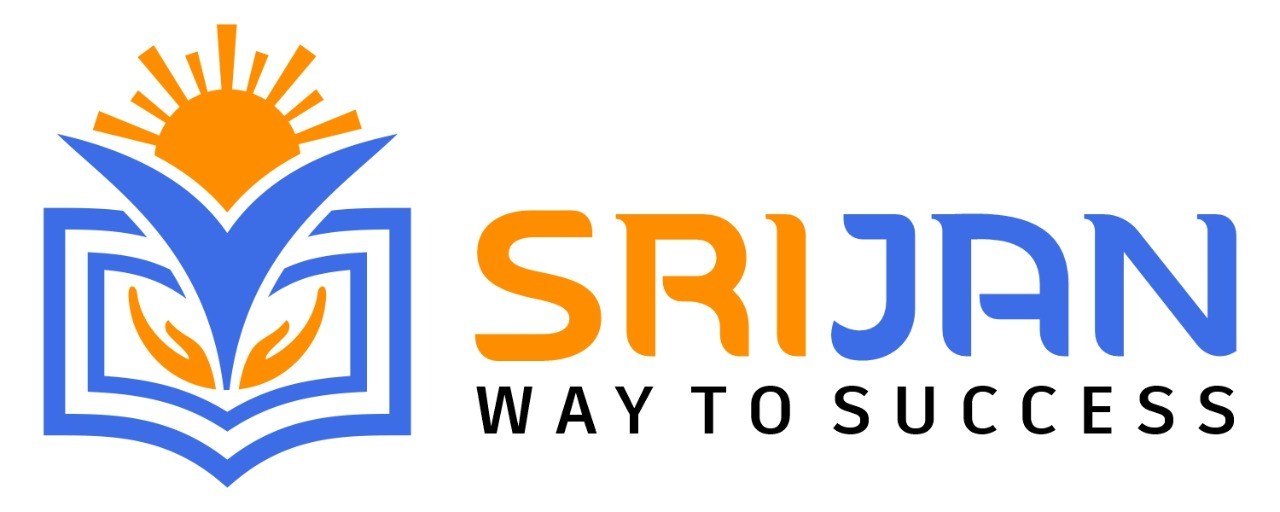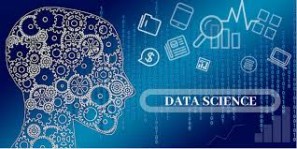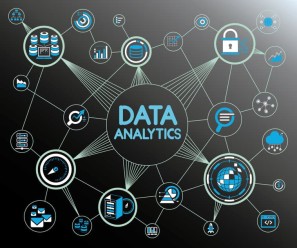Django Python Web Development Training || Django Python Web Development Certification Training || Django Python Web Development Online Training || Django Python Web Development Self-Paced Training || Django Python Web Development Instructor-Led Training
Key Features of Training:
- 6 Month Instructor-Led Training
- Mock Interview Sessions
- Project Work & Exercises
- Flexible Schedule
- 24 x 7 Lifetime Support & Access
- Certification and Job Assistance
The fee for Django Python Web Development training can vary depending on several factors, such as location, duration of the course, training format, and level of expertise. Various training options for Django are available, including instructor-led courses, e-learning courses, and virtual live classrooms.
For more details, you can Register/Sign Up.
What is Django Python Web Development certification?
A: Django Python Web Development certification is a professional credential that validates an individual's expertise in using the Django framework for building web applications using Python. It demonstrates proficiency in web development concepts, frameworks, and best practices.
What are the prerequisites for Django Python Web Development certification?
A: Prerequisites for Django Python Web Development certification typically include a basic understanding of Python programming, HTML, CSS, and JavaScript. Familiarity with web development concepts and frameworks is also beneficial.
Which programming language is helpful in learning Django Python Web Development, and why?
A: Python is the primary programming language used for Django Web Development. Its simplicity and readability make it easy to learn, and Django’s powerful features facilitate rapid web application development.
How do I become a Django Web Developer?
A: To become a Django Web Developer, you should develop strong skills in Python programming, web development principles, and the Django framework. Building real-world projects, participating in internships, and gaining hands-on experience are crucial steps. Our certification course can help you acquire these essential skills.
Does Django Python Web Development require coding knowledge?
A: Yes, coding knowledge is essential for Django Python Web Development, particularly in Python. Understanding how to write and manipulate code is crucial for developing web applications effectively.
Django Python Web Development vs. other frameworks: Which is better?
A: Django is a high-level web framework that encourages rapid development and clean design. Compared to other frameworks like Flask or Ruby on Rails, Django offers more built-in features and follows the "batteries-included" philosophy. The best choice depends on your specific project requirements and personal preferences.
What are the levels of Django Python Web Development certification?
A: Certifications in Django Python Web Development typically come in various levels, including Beginner, Intermediate, and Advanced. Beginner certifications cover fundamental skills, while Intermediate and Advanced levels focus on more complex concepts, frameworks, and best practices.
What is the format of Django Python Web Development certification exams?
A: Django Python Web Development certification exams are typically computer-based and may include multiple-choice questions, coding challenges, and practical projects. The exact format depends on the certification program.
How can I prepare for Django Python Web Development certification?
A: You can prepare for the certification through official training courses, online resources, and hands-on projects. Practicing real-world web development scenarios and gaining experience with Django will significantly enhance your preparation.
How long does it take to prepare for Django Python Web Development certification?
A: The preparation time varies based on your existing knowledge and experience. Typically, candidates spend several weeks to a few months studying for certification, depending on the exam's difficulty level.
Django Python Web Development certification is a professional credential that validates an individual’s knowledge and skills in using the Django framework for building robust web applications with Python. The certification assesses a candidate's ability to develop web applications, implement best practices, and leverage Django’s features to create efficient and scalable solutions.
The certification program is offered at various levels, such as Beginner and Advanced. The Beginner level certification tests foundational knowledge of web development concepts, Django basics, HTML, CSS, and JavaScript. The Advanced level certification is aimed at professionals with experience in applying complex Django features, developing REST APIs, and working with databases to create full-fledged web applications.
To prepare for the Django Python Web Development certification, candidates are advised to participate in official training programs, study for at least six weeks, and gain hands-on experience through real-world projects. Practical exposure to Django, along with proficiency in Python programming and frontend technologies, is key to success in the certification exam.
1. Introduction to Web Development
- Understanding web technologies and the web ecosystem
- Overview of client-side vs. server-side development
- Structure of HTML documents
- HTML tags, attributes, and elements
- Creating forms, tables, and lists
- Semantic HTML and accessibility best practices
CSS Basics
- Introduction to CSS and its role in web design
- CSS selectors, properties, and values
- Box model, layout techniques (flexbox, grid)
- Responsive design and media queries
- Styling forms and navigation menus
2: Introduction to Python
- Python syntax and data types
- Control structures (loops, conditionals)
- Functions and modules
- Working with libraries and packages
3: Introduction to SQL
- What is SQL?
- Purpose of SQL
- Who should learn SQL?
- What are the subsets of SQL?
- Data Definition Language
- Data Manipulation Language
- Data Control Language
4.Introduction to Databases and RDBMS
- Overview of databases
- Understanding RDBMS concepts
5.Install a Database Engine
- Download MS SQL Server, Oracle, or MySQL Database Engine
- Installation steps
- Launch SQL Server Management Studio
- Select New Query and launch SQL Query
- Type SQL Commands and Execute
6. SQL Syntax?
- Focus on SQL Syntax
- SQL keywords
- SQL is not case sensitive
- SQL Comments
- SQL Commands
- Writing SQL Statements
7.SQL Data Types?
- SQL Numeric data types
- Date and Time data types
- Character and String data types
- Unicode character string data types
- Binary data types
- Miscellaneous data types
8.SQL Operators?
- SQL Arithmetic Operators
- Comparison Operators
- Logical Operators
- Bitwise Operators
9. SQL Expressions?
- SQL Boolean Expression
- SQL Numeric Expression
- SQL Date Expression
10. SQL Comments?
- SQL Comments
- Purpose of comments
- Single-Line Comments
- Multi-line Comments
11.. SQL – Data Definition Language Commands and Operations?
- SQL Data Definition Language Commands
- Create, Alter, Drop, Truncate, Rename
- Data Definition Language Operations
- Create a Database
- Use Database
- Rename a Database
- Drop Database
- Create a Table
- Rename Table
- Add a Column to Existing Table
- Add Multiple Columns to Existing Table
- Modify an Existing Column
- Rename a Column
- Drop a Column
- Truncate a Table
- Drop a Table
12. . SQL – Data Manipulation Language Commands and Operations?
- Data Manipulation Language Commands
- SELECT, INSERT, UPDATE, DELETE
- Data Manipulation Language Operations
- Retrieving data from a table
- Inserting data into a table
- Updating existing data in a table
- Deleting all records from a table
13.SQL – Data Control Language Commands?
- Overview of DCL commands
- GRANT and REVOKE
- Managing rights, permissions, and controls in the database system
14.. JavaScript in Web Browser
- Embedding JavaScript in HTML
- Execution of JavaScript code
15.Browser Object Model
- The window object
- Dialog boxes
- Timers
- The location object
- The navigator object
- Browsing history
16.Handling Events
- Document structure
- Selecting document elements and query selectors
- Moving through DOM tree
- HTML elements and attributes
- Creating, changing, and deleting nodes
17.AJAX
- Event propagation
- Event handlers registering and invocation
- Event object
- Types of events
18.Graphics
- JavaScript and HTTP communication
- Synchronous and asynchronous requests
19.Data Storage?
- Multimedia basics
- Canvas API basics
20.Security
- Cookies
- Web Storage
- IndexedDB
21.SQL – Data Control Language Commands?
- Filesystem security
- The Same Origin Policy
- Plugins
- Cross-Site Scripting
22.Python for Beginners
- Python IDE/Editor Installation
- Python Variables
- Arithmetic Operators
- Comparison Operator
- Assignment Operator
- Membership Operator
- If Statement
- If Else Statement
- Break & Continue Statement
- Exception Handling
- File Operation
- Python Built-in Modules
- Packages in Python
- Python Date and Time
- Python Regular Expressions (RegEx)
- Python XML Parser
- Python Database Communication
- Web Scraping
- GUI Programming (Tkinter)
23.Core Python Syllabus
- Introduction to Python
- Installing Python IDES (Python IDLE and Anaconda)
- Data-types in Python
- Variables in Python: Declaration and Use
- Typecasting in Python
- Operators in Python: Assignment, Logical, Arithmetic
- Taking User Input
- Conditional Statements: If, else, Nested, If, else, and elif
- Python Collections: List, Tuple, Sets, and Dictionary
- Loops in Python: For Loop, While Loop, Nested Loops
- String Manipulation: Basic Operations, Slicing, Functions, and Methods
- User Defined Functions, Types of Functions
- Lambda Function
- Importing Modules: Maths Module
- Object-Oriented Programming in Python
25.Advanced Python Syllabus
- Iterators for Dictionaries
- keys() and values()
- The 'in' Operator
- Building Lists
- List Comprehension Syntax
- List Slicing Syntax
- Omitting Indices
- Reversing a List
- Stride Length
- Anonymous Functions
- Lambda Syntax
- Iterating Over Dictionaries
- Comprehending Comprehensions
- List Slicing
26.Models and Databases
- Django Models: Creating data models and defining relationships.
Q1. What is Django, and what are its main features?
A1: Django is a high-level Python web framework that encourages rapid development and clean, pragmatic design. Its main features include an ORM (Object-Relational Mapping), automatic admin interface, built-in authentication, robust security features, and a modular architecture.
Q2. What is a Django model, and why is it important?
A2: A Django model is a Python class that defines the structure of your database table, including fields and their types. It is important because it provides a clear representation of the data in your application and allows you to interact with the database using Python code rather than SQL.
Q3. What is the Django ORM, and how does it help in database management?
A3: The Django ORM (Object-Relational Mapping) is a powerful database abstraction layer that allows developers to interact with databases using Python objects instead of SQL queries. It simplifies database management by providing an easy-to-use interface for creating, retrieving, updating, and deleting records.
Q4. What is the difference between a Django view and a template?
A4: A Django view is a Python function or class that receives a web request and returns a web response. A template, on the other hand, is an HTML file that defines the structure and layout of a webpage. The view handles the logic, while the template handles the presentation.
Q5. What is a Django URLconf, and how does it work?
A5: A URLconf (URL configuration) in Django is a mapping between URL patterns and views. It allows you to define how URLs are processed in your application by associating specific URL patterns with corresponding view functions or classes.
Q6. How do you create a simple Django project?
A6: To create a simple Django project, you can follow these steps:
- Install Django using pip.
- Run the command
django-admin startproject projectnameto create a new project. - Navigate to the project directory and run
python manage.py runserverto start the development server. - Access the project in your web browser at
http://127.0.0.1:8000/.
Q7. What is data migration in Django, and why is it important?
A7: Data migration in Django is the process of applying changes made to the models to the database schema. It is important because it ensures that the database structure is in sync with the application’s data models, enabling smooth updates and version control of the database.
Q8. What is a Django form, and how is it used?
A8: A Django form is a Python class that represents an HTML form and handles user input. It is used to validate and process data from users, generate HTML form elements, and manage form submission.
Q9. What is the purpose of Django middleware?
A9: Django middleware is a framework of hooks into Django's request/response processing. It is used to process requests globally, perform tasks such as authentication, logging, and session management, and manipulate the request and response objects before they reach the view or after they leave the view.
Q10. What is the Django admin interface, and how does it help developers?
A10: The Django admin interface is an automatically generated web interface for managing application data. It helps developers by providing a user-friendly way to create, read, update, and delete records without having to write custom views or forms.
Q11. What is a Django template, and how does it facilitate dynamic web pages?
A11: A Django template is a text file that defines the layout of a web page, containing HTML mixed with Django Template Language (DTL). It facilitates dynamic web pages by allowing developers to insert dynamic data into the HTML using template tags and filters.
Q12. What is a Django signal, and how is it used?
A12: A Django signal is a mechanism that allows different parts of an application to communicate with each other. Signals are used to allow decoupled applications to get notified when certain actions occur elsewhere in the application, such as when a model is saved or deleted.
Q13. What is Django REST framework, and why is it used?
A13: Django REST framework is a powerful toolkit for building Web APIs in Django. It is used to create RESTful APIs that enable communication between a client (like a web or mobile app) and a server, allowing for the exchange of data in a structured format like JSON.
Q14. What is the purpose of unit tests in Django?
A14: The purpose of unit tests in Django is to verify that individual components of the application work as intended. By writing tests for models, views, and forms, developers can ensure that changes do not break existing functionality and maintain code quality.
Q15. What are static files in Django, and how are they managed?
A15: Static files in Django are files such as CSS, JavaScript, and images that do not change dynamically. They are managed using the static app and can be collected and served during development and in production using the collectstatic command.
Q16. What is a context processor in Django, and how does it work?
A16: A context processor in Django is a Python function that takes a request object as input and returns a dictionary of data that is added to the context of all templates. It allows developers to make common data available to templates without having to include it explicitly in every view.
Q17. What is a Django query set, and how is it useful?
A17: A Django query set is a collection of database queries that can be executed to retrieve records from the database. It is useful because it allows developers to filter, order, and manipulate data in a Pythonic way, leveraging the power of Django's ORM.
Q18. What is the difference between a one-to-one and a foreign key relationship in Django?
A18: A one-to-one relationship in Django means that each record in one model is related to one and only one record in another model, whereas a foreign key relationship means that one record in a model can be related to multiple records in another model. This is implemented using OneToOneField and ForeignKey, respectively.
Q19. What is CSRF protection in Django, and why is it important?
A19: CSRF (Cross-Site Request Forgery) protection in Django is a security measure that helps prevent malicious attacks by ensuring that requests made to the server are coming from trusted sources. It is important because it protects sensitive user actions, such as form submissions, from being executed without the user’s consent.
Q20. What is Django's architecture pattern, and what are its components?
A20: Django follows the MVT (Model-View-Template) architecture pattern. Its components include:
- Model: Defines the data structure and business logic.
- View: Processes user requests and returns responses.
- Template: Manages the presentation layer and displays data to the user.
Participants will have 24/7 access to our online lab, providing hands-on experience with Django and Python web development tools and scenarios.
This includes server access to Python, Django, and Jupyter Notebooks for 1 year, ensuring ample time to practice and apply your skills in a real-world environment.
With this extended access, you can work on projects, explore advanced Django features, and solidify your understanding of web development using the latest technologies.





